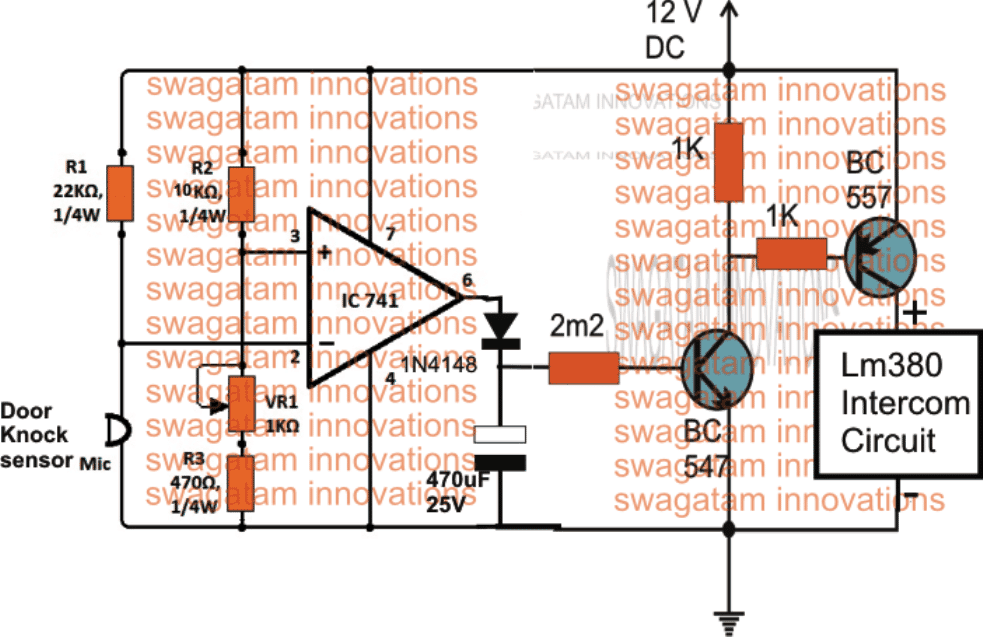In this post I have explained a simple knock activated door security alarm circuit which can be installed by anybody for identifying a guest or an intruder at the door. The idea was requested by Mr. Akhilesh.
Circuit Objectives and Requirements
My brother is trying to prepare a project for his college is “Speaker intercom phone”. When visitors knock door (or ring bell) I can talk to him without open door.I found many circuit on online be none of any solved my purpose.The key point in project is :
1:- No need of door bell.
2:- No any switch for guest to talk (switch is for me only).
3:- Only mic and speaker at visitor side, reducing cost its chance to theft the circuit. in this cars lose is
very less and easy to repair.
If any circuit (DIY) is available or design for me.
Please confirm its price and detail how to buy it.


The Design
A simple knock activated door security intercom circuit is shown in the above figure.
An opamp using IC 741 is used as an amplifier, while an electret MIC is used as the door knock sensor.
The MIC is supposed to be glued with the door inner surface so that whenever the door is knocked from the other side the mic is able to sense the corresponding vibrations.
Each knock vibration sensed by the MIC is converted into electrical negative pulses, which momentarily ground the inverting pin#2 of the opamp which can be seen attached with the MIC and the associated biasing resisting R1.
This resistor value can be altered to change the sensitivity of the MIC reception.
The above action is amplified by the opamp to produce equivalent pulses as high as the applied supply voltage at its pin#6.
The next stage which may be seen integrated with the output pin#6 of the opamp is simple transistor delay timer circuit, which responds to the opamp high output pulses and generates sustained delay OFF output at the collector of the PNP transistor BC557.
Meaning whenever somebody knocks at the door the MIC senses it and activates the opamp to create corresponding short high pulses at its output pin#6 which is held and sustained for a few a minutes by the delay circuit.
The delay length can be varied by increasing or decreasing the 470uF/2M2 components either individually or together.
2-Way Intercom System
The sustained delay OFF output from the PNP transistor is used for powering a simple dual speaker intercom using the IC LM380.
This simple 2 way intercom system circuit has been comprehensively explained in one of my earlier posts.
As soon as this simple intercom is activated, the user is able to talk with the guest (or intruder) from inside the house and identify the person before opening the door.
The referred intercom circuit in the link has the feature of a using the speakers on both sides a MIC as well as a loudspeaker for reproducing speech. This is toggled in the talk mode or listen mode through a DPDT switch.
This switch may be controlled by the user while negotiating with the person outside the door, and switchover its position accordingly while talking or listening to the conversation.
For further inquiry regarding this simple knock activated door security intercom circuit, please feel free to express your thoughts through your comments.
nice
Sir,
Thanking you very much to reply. but my purpose has not been solved.
Akhilesh, you can try this circuit:
https://www.homemade-circuits.com/2012/08/how-to-make-simplest-intercom-system.html
but it uses speaker instead of mic for speaking